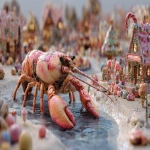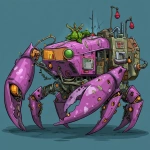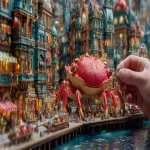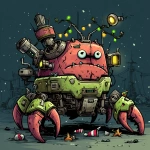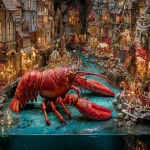Explore the Best AI Image Gallery

Beyond the Canvas: How IoT is Transforming the Creative Industry
The creative landscape is undergoing a profound metamorphosis, fueled by the rapid advancements in Internet of Things (IoT) technology. From wearable sensors to interconnected smart devices, IoT is empowering artists, designers, and innovators with unprecedented tools to express themselves, collaborate, and push the boundaries of creativity.
Unleashing New Creative Possibilities
IoTs impact on the creative industry extends far beyond simply adding technology to existing workflows. Its about creating entirely new paradigms for artistic expression and interaction.
1. Interactive and Responsive Art
Imagine sculptures that react to touch, paintings that shift colors based on ambient sound, or installations that respond to viewers movements. IoT enables artists to create truly interactive and responsive artworks, blurring the line between observer and participant. Smart sensors embedded within these creations can capture data such as temperature, light, and movement, translating it into dynamic visual or auditory experiences.
2. Enhanced Collaboration and Co-Creation
IoT fosters a more collaborative and interconnected creative process. Artists can now work together in real time, regardless of their geographical location, using shared platforms and devices connected through the internet. This opens up exciting possibilities for large-scale projects, participatory art installations, and cross-cultural collaborations.
3. Personalized Creative Experiences
IoT allows for personalized and customized creative experiences tailored to individual preferences. Imagine a museum exhibit where visitors can interact with artworks through their smartphones, triggering unique audio or visual responses based on their interests. Or consider fashion designs that adapt to the wearers body temperature or mood, creating a truly dynamic and personalized garment.
Exploring the Ethical Dimensions
As with any powerful technology, the integration of IoT into the creative industry raises important ethical considerations:
1. Data Privacy and Security
IoT devices often collect vast amounts of data about users interactions with artworks and installations. It is crucial to ensure that this data is handled responsibly, with clear guidelines on its collection, storage, and usage. Artists and institutions must be transparent about their data practices and obtain informed consent from participants.
2. Algorithmic Bias and Fairness
AI algorithms are increasingly being used in creative applications, but they can inherit biases present in the training data. This can lead to unfair or discriminatory outcomes in artwork generation or selection. It is essential to address algorithmic bias through careful data curation, diverse training sets, and ongoing monitoring and evaluation.
3. Accessibility and Inclusion
IoT-enabled creative experiences should be accessible to all individuals, regardless of their abilities or disabilities. Designers must consider the needs of diverse users and strive to create inclusive artworks and installations that are welcoming and engaging for everyone.
Future Trends Shaping the Landscape
The convergence of IoT, artificial intelligence (AI), and augmented reality (AR) is poised to further transform the creative industry in the years to come:
1. Immersive Creative Experiences
Expect a surge in immersive creative experiences that blend physical and digital realms. AR will enable artists to overlay digital elements onto the real world, creating interactive installations and performances that engage multiple senses.
2. AI-Powered Artistic Creation
AI algorithms will play an increasingly prominent role in artistic creation, assisting artists in generating new ideas, exploring different styles, and even producing entirely autonomous artworks. This raises fascinating questions about the nature of creativity and authorship.
3. Smart Cities and Interactive Public Spaces
IoT will be instrumental in creating smart cities with interactive public spaces that foster creativity and community engagement. Imagine urban environments where buildings respond to the sounds of music, streets transform into art galleries, or parks become interactive playgrounds for artistic expression.

